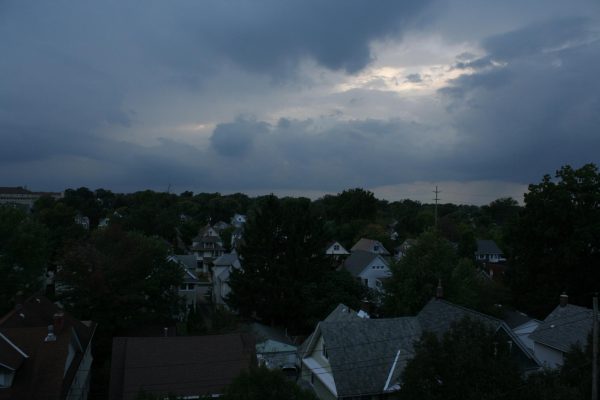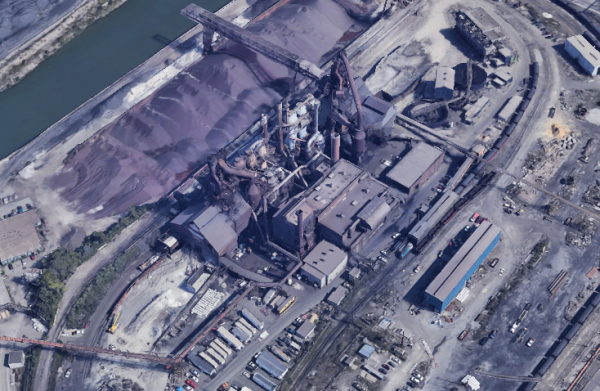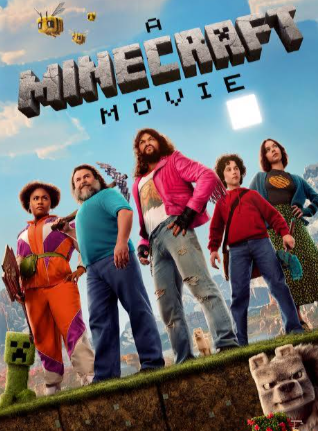The Midwest as a name is somewhat inaccurate, as the region described by the term is located primarily in the northern central area of the country. Twelve states make up the Midwest region. Illinois, Indiana, Iowa, Kansas, Michigan, Minnesota, Missouri, Nebraska, North Dakota, South Dakota, Ohio, And Wisconsin. Within these states lies a hotbed of industry, music, and culture. According to Census.gov, these states have a combined population of just under 69 million. The region has an area of about 750,000 square miles occupied by seemingly endless grids of fields, quiet suburbs, bustling cities, and large expanses of magnificent nature scenes.
Midwest suburbs have rows of similar-looking, quiet, usually single-family houses down every street. These neighborhoods commonly have natural features like woodlands or parks located close by. Also located nearby are small and large businesses, shopping centers, and dining centers.

As you get further from a big city, the suburban sprawls become rural, ranch-style properties occupying long stretches of road. These neighborhoods are far away from the infrastructure of the bigger towns, thus requiring more car-centered travel. Eventually, these more rural neighborhoods become large expanses of farmland dotted with far-apart farmhouses. Neighborhoods in the Midwest commonly are placed close to one of the many beautiful nature scenes. Large open prairies and grasslands, great lakes, wonderful and diverse woodlands, rolling hills, valleys, and rivers occupy large amounts of the region. Big cities in the Midwest are like any other, with tall office skyscrapers jutting into the horizon with businesses and high-density housing down every street. These cities, surrounded by urban and industrial developments, take on the culture and attitude of those areas, creating a unique environment.
Midwestern culture is based on a friendly and calm demeanor bolstered by religion, immigrant influence, a positive working attitude, a strong work ethic, and seemingly nothing to do. Midwestern people tend to be modest and live simple lives, seeking gratification through hard work and community activity instead of personal achievement. Activities like hiking, sporting events, holiday gatherings and decorations, work, church, community gatherings, BBQs, and music events are popular with individuals and families throughout the Midwest. Food in the Midwest is a big part of life. Many dishes have roots in the agricultural background of the region and the immigrant population. Common foods in the Midwest include pie, pizza, hot dogs, eggs, biscuits, and many European-inspired dishes like sausages, pierogies, chicken paprikash, and sauerkraut. These elements of vastness and independence culminate in the quiet, melancholic atmosphere.
The Midwest is home to one of the most diverse music scenes in the U.S., with genres like soul, rock and roll (and its many derivatives), and jazz originating and evolving in this area. The great migration and industrialization brought lots of changes to the music scene. With the introduction of southern sounds and more advanced musical gear, genres like jazz, blues, and soul were built by artists like Muddy Waters and Willie Dixon. Later, people like Chuck Berry would merge genres like jazz and blues and newer tech like electric instruments to create an early form of rock and roll. While jazz and rock became popular in larger cities, country and bluegrass from the south and Appalachia found a home in rural towns. In 1959, Berry Gordy founded Motown Records, which would end up being one of the most influential events to happen to music. The Motown Record label would work with artists like Stevie Wonder and Diana Ross to create refined and polished music that appealed to wider audiences and broke down cultural and racial barriers on top of building the concept of a music industry.

During the 1960s, protest music began to rise in popularity, and rock and roll continued to evolve, separating into denominations like classic rock, alternative rock, punk, etc. Classic rock would find popularity with working and regular people due to relatable lyrics often about the troubles of working life. Punk gained traction during the 80s, propagated by burnouts and lower-class individuals due to its simple construction and messages about society and its problems. Alternative rock found a more artistic crowd for its strange instrument effects and irregular sounds. In the late 80s, genres like blues and jazz would find a younger audience who would remix these songs and sing over them in an early form of hip-hop. As time progressed to the 90s and 2000s, hip-hop would branch into various other genres like gangsta rap, drill, and trap. These genres feature lyrical structure reminiscent of poetry, often about the struggles of racism and poverty, and in genres like trap, lyrics about street life and crime. Today, these genres continue to evolve and expand in their local scenes.
The Midwest is a huge part of American industry, characterized by farms, factories, steel mills, and other operations spread throughout the region.

The Midwest is an exceptional region for agriculture because it has rich soil, a diverse yet stable climate, a good amount of rain, and large open areas perfect for large operations. Crops such as corn, soybeans, wheat, other grains, fruits like apples and cranberries, and vegetables such as potatoes and lettuce are common crops on Midwestern farms. Livestock cultivation is also a regular practice, with animals like cows, chickens, hogs, and turkeys being raised and processed in the area. The majority of the Midwest is part of a region dubbed the “Corn Belt’ due to the majority of U.S.-produced corn coming from the area.
During the Industrial Revolution, immigrants traveled to the Midwest en masse, and laborers found work in industrial settings like railroads, factories, and steel mills. The revolution brought railroads to America, which connected the whole country and started hasty growth in all industries nationwide.

-Google Earth
These railroads facilitated interstate commerce across the country, allowing improved distribution of goods and materials and furthering industrial expansion. There was a high demand for steel at the time, and the ability of steel mills in places like Cleveland and Pittsburgh to receive materials and send out products speedily would cause the industry to become massive. Factories were also affected by railroads in the same manner, allowing manufacturers to start mass-producing essentially everything and disperse it nationwide. The number of immigrants and working-class people provided a pool of affordable labor, cementing the hardworking attitude of Midwestern citizens and the integration of immigrants into Midwestern society.
Overall, the Midwest is an incredible and vital part of American society. From its rich and diverse musical styles and influence to its place in supplying the country with food and industrial goods, it has established its place in American and world history. The diverse living environments provide a good and simple life whether you live in a big city or on a farm, paired with its various natural expanses offering somewhere to go and something to do when it gets boring. The somewhat melancholy atmosphere of the Midwest provides a canvas for life with its combination of community, industry, and culture, allowing opportunities for almost anyone to start and lead a great life.


















































